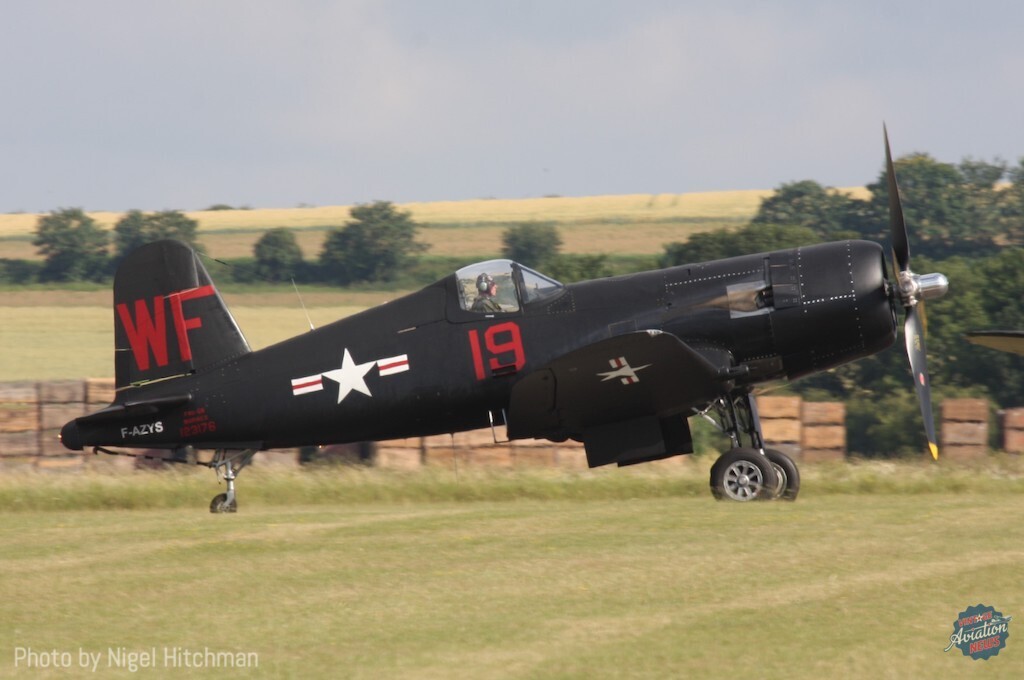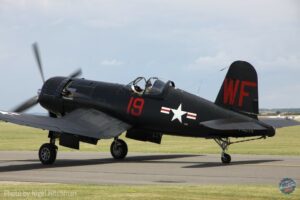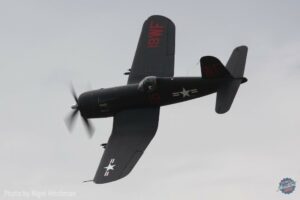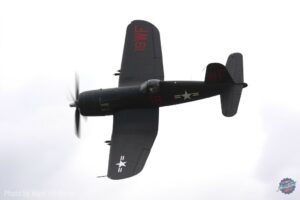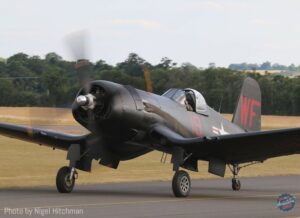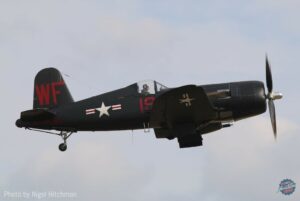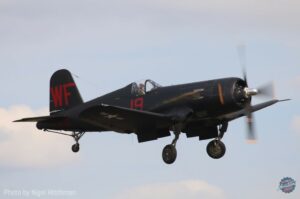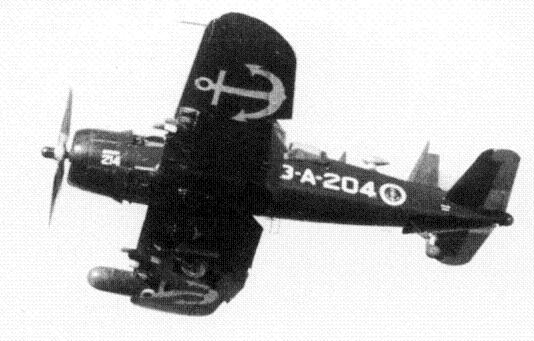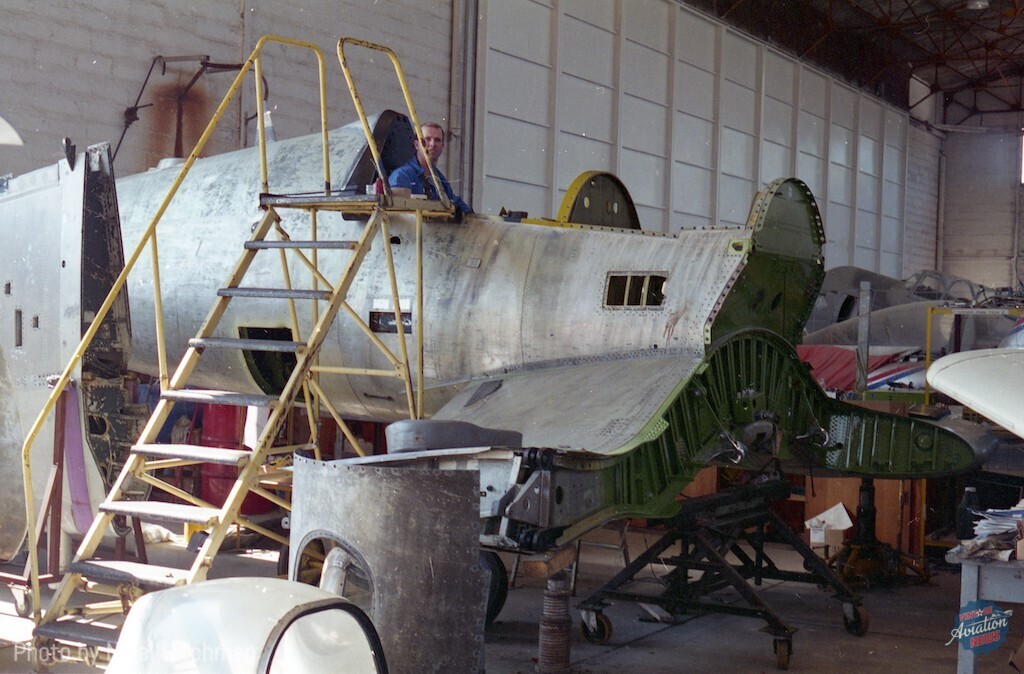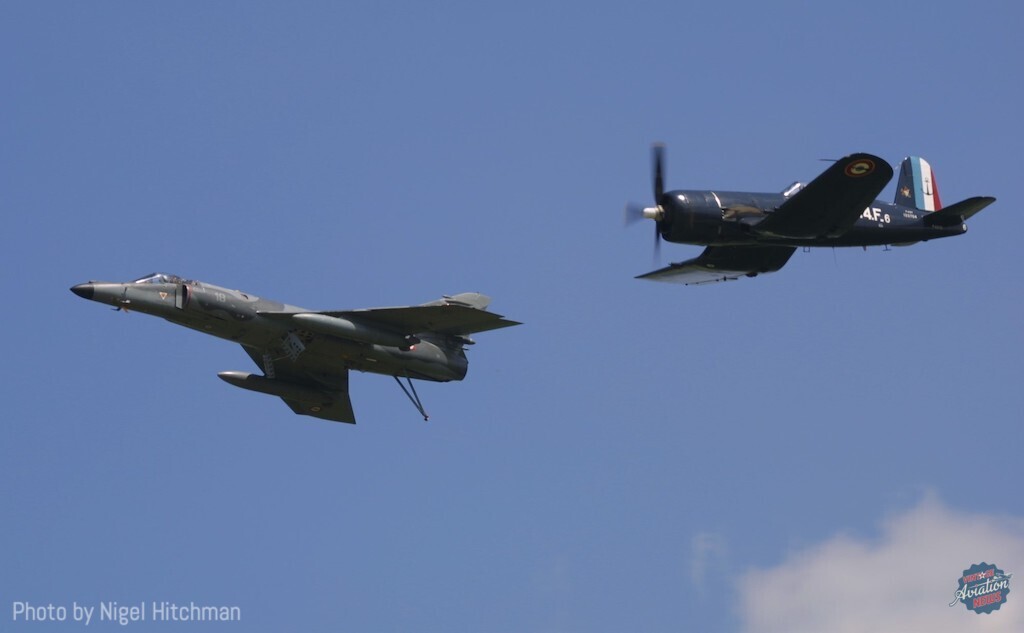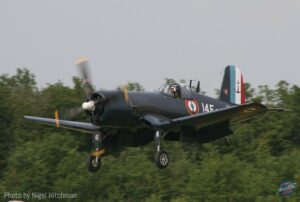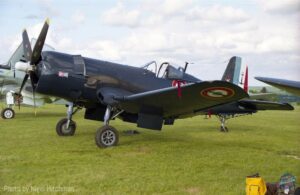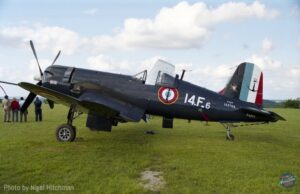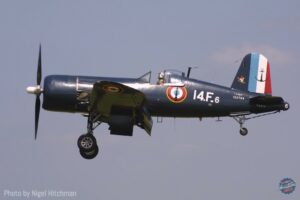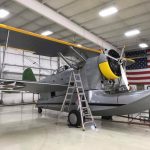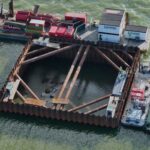by Nigel Hitchman
On November 9, 2023, Georg Raab of Flying Legends GmbH purchased Chance Vought F4U-5NL Corsair BuNo 124541 (D-FCOR) from its previous owner, Max-Alpha Aviation. It will soon move from Bremgarten Airport to Flying Legends’s base at Siegerland, where they also keep P-51D Mustang Frances Dell (44-74453/N51ZW) and Harvard Mk.IV (RCAF20286/D-FAME).

This Corsair, built as a ‘winterized’ F4U-5NL night fighter variant, rolled off the factory line in Dallas, Texas on December 31, 1950. In May 1951, the U.S. Navy assigned it to VC-3 (Navy Composite Squadron 3) with the tail code ‘NP’. In late January, 1952, FASRON 11 (Fleet Air Service Squadron 11) ferried the aircraft to Japan, where it was initially assigned to a U.S. Marine Corps unit, MWSS1 (Marine Wing Support Squadron 1). On February 20th, about a fortnight later, BuNo.124541 joined the ranks of VMF-513(N), the famed Flying Nightmares. This Marine unit flew Tigercats and Corsairs on night attack missions over Korea. They had about 15 F4U-5NLs in service at the time, with ‘541 being one of them – making the aircraft a genuine Korean War combat veteran.
On December 10, 1952, BuNo.124541 returned to the States, having flown about 122 combat hours over the Korean peninsular. Flying a further 150 hours or so with subsequent units (both over Japan and the USA), the Corsair found itself surplus to requirements on August 5, 1956. However, despite the U.S. Navy striking the Corsair from their books, the fighter’s military service was not quite at an end. In 1957, the Argentine Navy acquired ‘541, initially assigning it the code 2-A-202 and later 3-A-204. The aircraft suffered a landing accident on November 6, 1964, ending up in storage. Withdrawn from use, it eventually went on display at the Argentine Naval Museum at Tigre, near Buenos Aires, remaining on site between 1972 and 1991.
A French consortium bought the now-very-tired Corsair in 1991. It finally arrived at their base in Le Castellet during June 1994, where it underwent an extensive restoration. The group rebuilt the aircraft as an F4U-7, a Corsair variant operated exclusively by the French Navy. She made her first post-restoration flight on March 9, 2000, in full French Navy colors, and sporting the markings of 133704/14.F.6.
Operating from Le Castellet, the magnificent fighter participated in numerous air shows, including major events such as La Ferté-Alais in France and Flying Legends at Duxford in England. Ramon Josa typically flew this combat veteran Corsair, which seems appropriate since the accomplished, former French Navy pilot had begun his military career flying F4U-7s. Interestingly enough, Josa had been responsible for locating this Corsair through his Argentine Navy contacts whom he came to know while instructing Argentinian pilots on the Dassault Étendard strike aircraft.
In 2009, after nearly a decade flying the Corsair, the French consortium sold their prize to Maxi Ganzia/Max Alpha Aviation, the aircraft flying to Bremgarten that December. It remained in its Aeronavale livery for the 2010 display season, participating at Flying Legends and other air shows. However, the Corsair’s owner then commissioned Meier Motors to strip and repaint the aircraft while also performing a major inspection. The warbird shop had planned to refinish the Corsair in a typical gloss sea blue livery, but luckily aviation enthusiast Matthias Dorst (who works with Meier Motors) had looked into ‘541’s history, getting hold of the airframe’s US Navy record card (via Corsair historian Rob Mears). The records revealed the whole story, that this aircraft had served in combat as a night fighter over Korea with VMF-513. Dorst of course told the aircraft’s owner about what he had discovered, and the rest, as they say, is history. Not only did the owner decide to repaint the aircraft in its original matte black VMF-513 markings, but he also chose to return the aircraft into its F4U-5 configuration.
As no wartime photographs of BuNo.124541 could be found, the team decided to repaint it as BuNo.123176 “Red 19”, a Corsair which flew with VMF-513 at the same time, and of which photographs were available. The modifications and repainting were completed over the winter, with ‘541 flying again on May 5, 2011, albeit still on the French civil register, but just in time for that year’s Flying Legends air show. Over the winter of 2011/12, the aircraft received a new engine and had a few remaining jobs completed. It also finally received a German registration (D-FCOR), which it retains to this day. The aircraft’s display appearances have been pretty thin over subsequent years, although it participate at Flying Legends in 2015. Hopefully, the new owners will fly it more frequently and take it to many more displays. We wish them much success in this endeavor!







